Whether you’re totally new to rowing or you’ve been at it a while, I’m sure you want to get your rowing machine hand position and grip just right.
After all, the right grip is important for maintaining correct form, and the wrong grip…well, it can lead to joint strain and possibly even repetitive use injuries (in your wrists, elbows, and shoulders).
In this article, I’m going to cover everything you need to know about the correct rowing machine grip, including both overhand and underhand grips.
I’ll also look at the correct hand position and the best way to hold the rowing bar to maximize efficiency throughout the entire range of motion.
By the time you get to the end of this article, you’ll know which of the different rowing machine grips is best for your specific physiology and workouts.
Why Does Rowing Machine Grip Matter?
You might be wondering, “Why does it matter how I grip the rowing machine? Isn’t the workout all the same no matter how I hold it?”
The answer to that is “yes and no”.
Let me explain…
Your grip on the rowing bar is just ONE aspect of the entire workout. There are so many other aspects of your form that are equally or even more important: the movement of your torso, the explosive push from your legs, your upper back position (hunching vs. keeping it straight), even the rhythm of your strokes.
However, in order to avoid the repetitive motion injuries common to rowers—including lower back pain, shoulder impingement, IT band friction, and extensor tenosynovitis of your wrist[1]—you’ve got to maintain proper form throughout the entire stroke.
Extensor tenosynovitis is most common among rowers who row using the wrong hand position and grip. Basically, the synovium sheathing the tendons in your wrist swells up as a result of irritation caused by friction, an injury, or degradation of the joint. It can lead to inflammation, pain, stiffness, and reduce activity.
That’s why it’s so important that you choose the correct hand position for rowing. The right position will maintain a “natural” position for your wrist, and in so doing, prevent friction or irritation of your wrist joint.
Your risk of repetitive motion injury or strain will decrease thanks to the correct form, and you’ll have many more years of regular rowing ahead!
Rowing Machine Underhand Grip vs. Overhand Grip: Which is Better?
Let’s start with the basics: holding the bar.
There are really only two options to choose from— overhand (or pronated, with your palms facing downward) and underhand (or supinated, with your palms facing upward).
Most people naturally gravitate toward the overhand grip. It’s a more natural position for your wrist, and you have an easier time gripping the bar and applying the strength of your forearms, biceps, and shoulders to pull through each stroke.
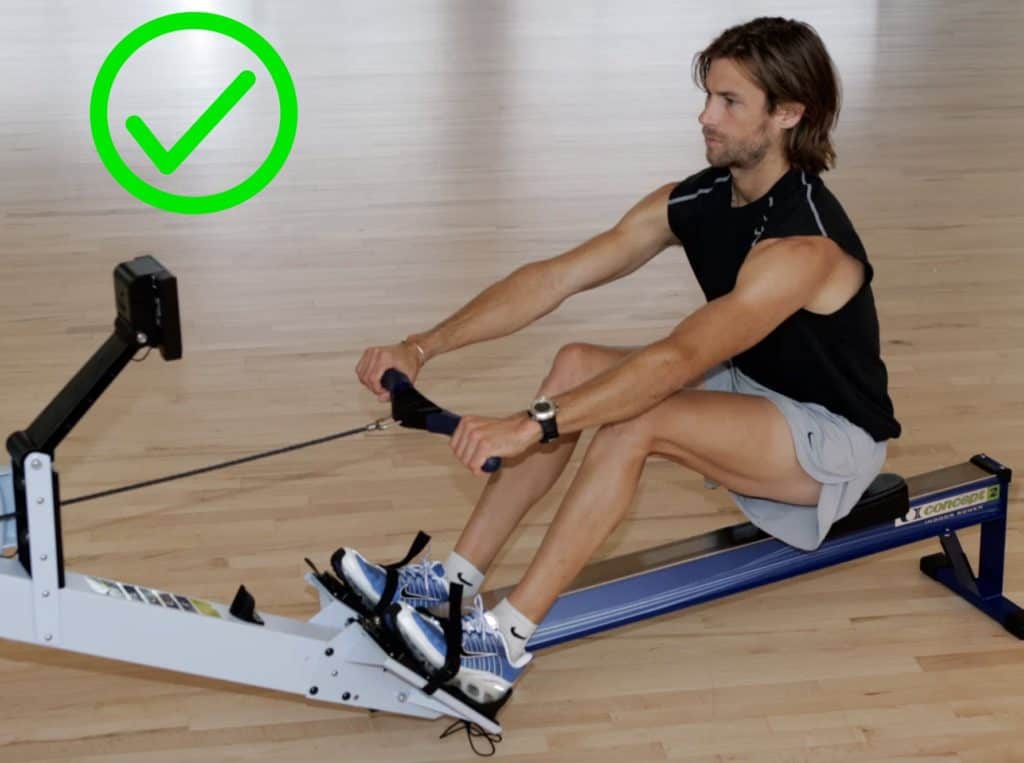
Of course, just because overhand is the go-to, that doesn’t mean you have to use it. Some rowers opt for the underhand grip, believing it will increase engagement of the biceps muscles and give them a nice “pump” in their arms.
Well, I’ve got some bad news for you: an underhand grip won’t significantly increase bicep engagement. Your “guns” won’t look any more beautiful thanks to the underhand grip.
(Note: If your goal is to build stronger, bigger arms, you should be lifting weights for power and strength, not rowing for endurance and cardiovascular exercise.)
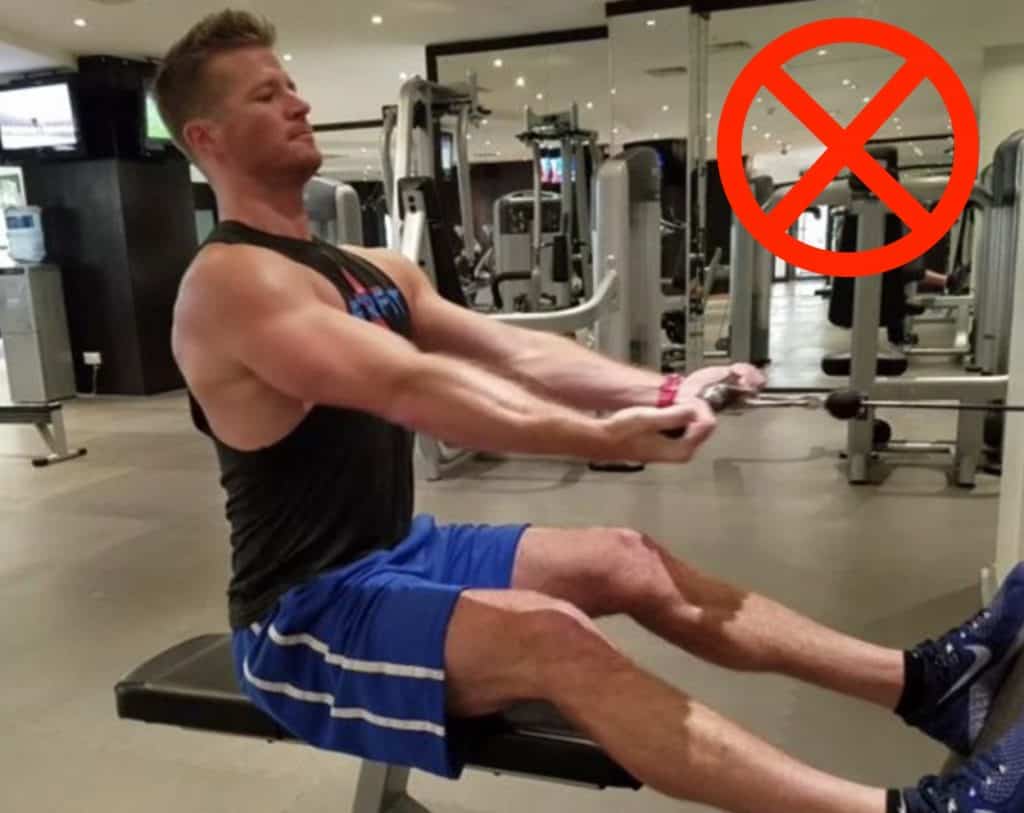
The underhand grip is also less natural, so it’s more likely to strain your joints. With the supinated grip, your wrists and elbows turn inward, with your arms closer to your sides. When your arms are fully extended at the beginning of the drive, the grip will actually twist your joints to the limit of their range of extension—or, for those with reduced mobility, beyond safe range.
An underhand grip is more likely to cause joint pain, increase friction on the tendons, and raise your chance of injuries.
With an overhand grip, your body has a smooth, natural range of motion. You will be able to move through the entire stroke more easily with less risk of repetitive motion strain or damage to your joints.
What is the Correct Rowing Machine Grip?
Now that you know it’s better to stick with the overhand rowing machine grip, let’s look at the correct hand position.
First, we start with the rowing machine hand position width.
Regular Grip – With this grip, your hands should be spread roughly shoulder-width apart. This is the most natural position and allows for the best range of motion. It targets the muscles in your upper back (particularly your trapezoids and rhomboids) and shoulders (posterior deltoids).
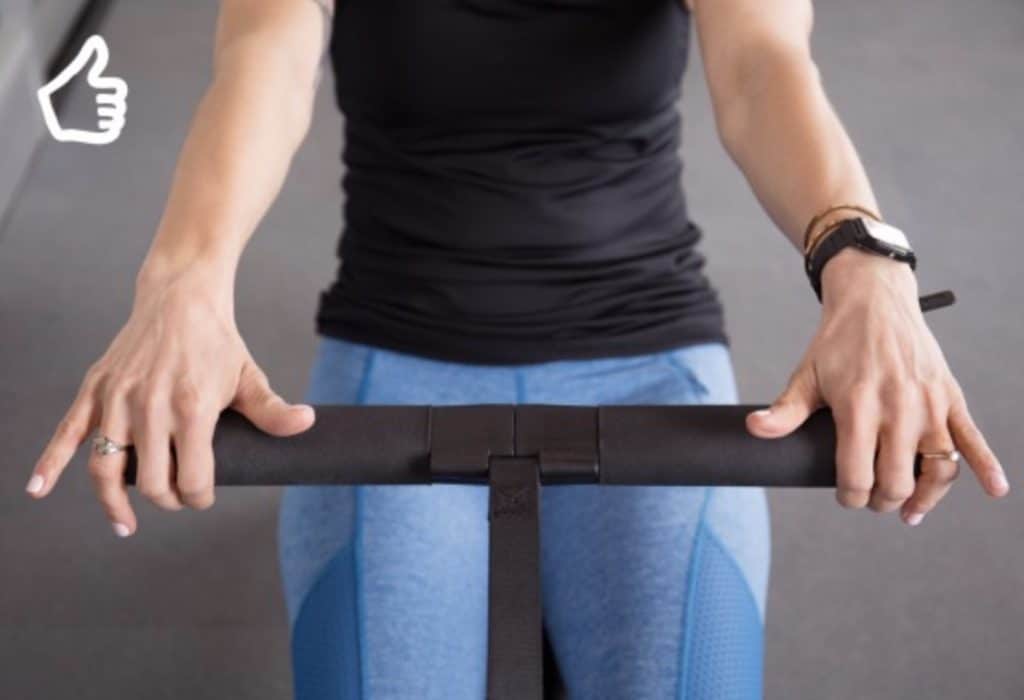
Note: If you have very broad shoulders, you may find you have to grip the ends of the bar. Don’t worry about that! You can even have your pinky fingers hanging off the bar. All that matters is that at least your three main fingers are hooked onto the bar and ready to pull.
Narrow Grip – With this grip, your hands are closer together, near the center of the bar where it’s yoked to the rowing machine chain. This shifts the focus inward to the latissimus dorsi muscles nearer your spine. It’s equally effective for your arms and shoulders, but it targets different back muscles than the wide grip position.
With the narrow grip, your wrists are also pushed to the edge of their range of motion, which could lead to higher risk of wrist strain or repetitive motion injury. You’re better off using the wide grip for smoother, freer movement through the entire row.
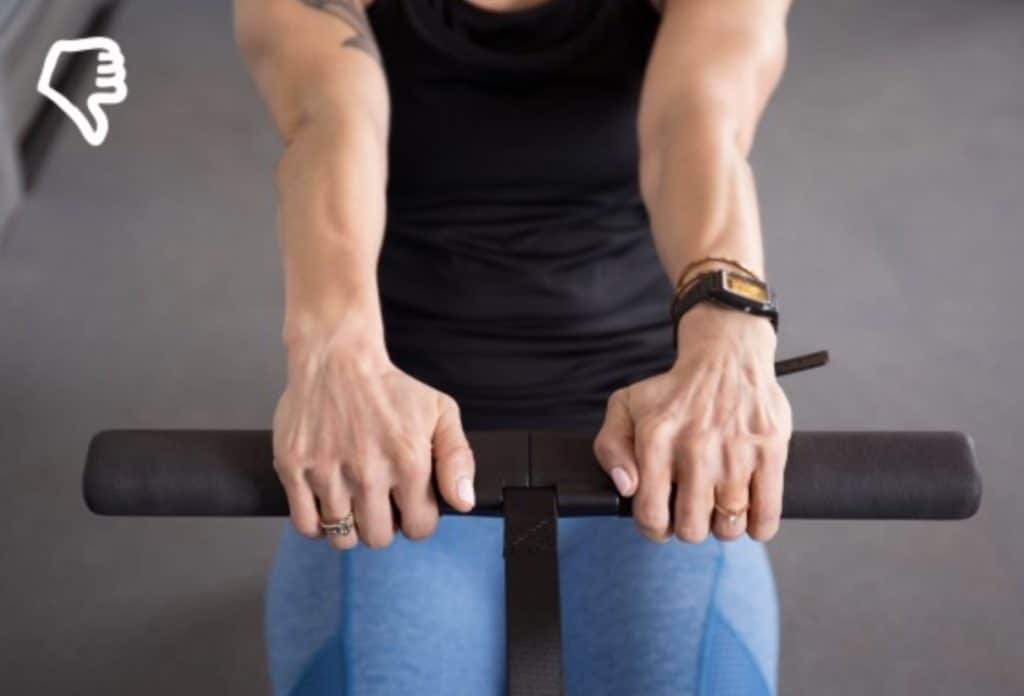
Next, let’s move on to how best to grip the rowing machine.
You need to know there’s a bit of controversy over the best hand grip. You have two options to choose from:
1. Fingers hooked around the bar at the second knuckle
This is typically recommended by trainers and rowers who really want to focus on maintaining a loose grip on the bar. By just hooking your fingers around the bar at the second knuckle, you avoid a “death grip” and keep a loose, easy grip on the bar.
Pay Attention: You want to avoid “death grip” at all costs. It increases the tension in your forearm muscles, as well as in your shoulders and neck. These smaller muscle groups are more easily fatigued, so you’ll run out of steam long before the larger muscle groups involved in the rowing (including your legs and back) ever get a proper workout.
The downside of this grip is that people with sub-par grip strength may struggle to maintain their hold on the bar during extended rowing sessions. And you may find your thumbs getting tired from pressing into the bar to maintain the grip.
2. Regular full-hand overhand grip, similar to how you would grip a pull-up bar
This is the most commonly used rowing machine grip, because it gives you a solid hold on the bar. However, with this grip, you’re going to have to be extra conscious that you don’t tighten your hold on the bar so much that it becomes a “death grip”.
Focus on using just enough grip strength to firmly grip the bar without clutching it as if your life depended on it.
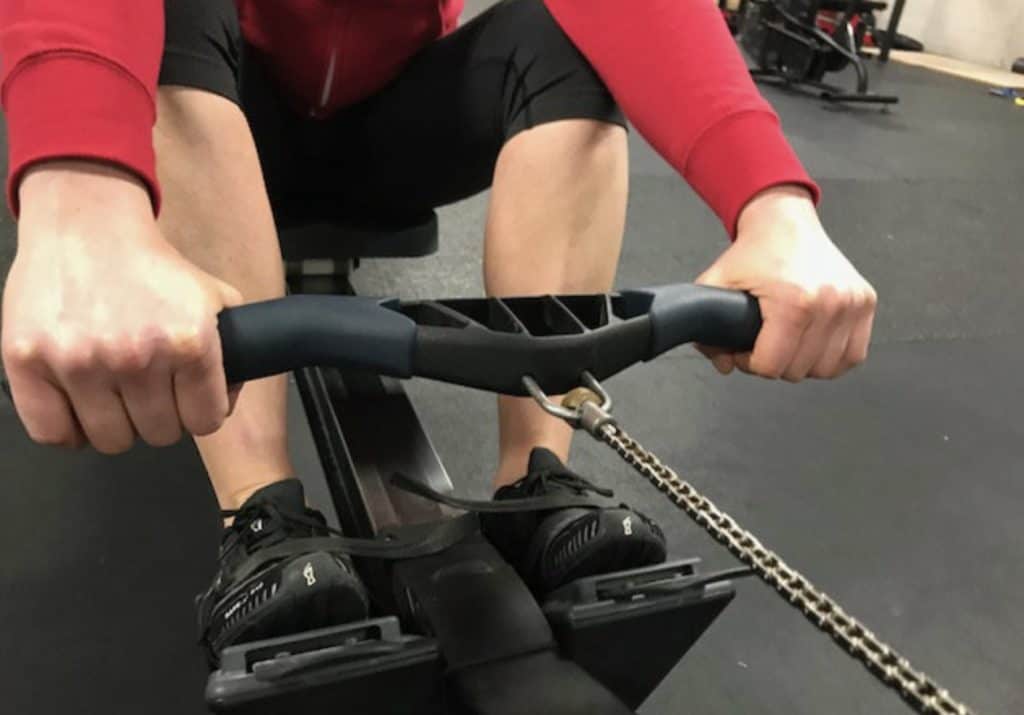
With this grip, your thumb naturally loops around the underside of the bar, making it easier for you to maintain your grip and row to your heart’s content.
As you become more experienced, you will be able to understand what grip works best for you. For example, when performing a HIIT workout, I typically use a ‘full-hand overhand grip’. This gives me more security of holding on to the bar. When performing long, steady-state exercises, I’ll typically gravitate more towards a ‘fingers hooked’ grip.
Play around with both and see which one you prefer!
Final Thoughts
And that’s it! You’ve learned how to grip the rowing machine properly, which rowing machine hand position and grip are best, and now you’re ready to get rowing.
If you begin to experience some blisters, you can always check out some different glove options here.
Also, check out some answers to common questions like “How Long Should You Row on a Rowing Machine?” and “Should I Use a Rowing Machine Everyday?“
I hope you enjoyed this short lesson on the correct rowing machine grip, and you’ve learned what you need to do to protect your wrists and arms as you enjoy this wonderful, highly effective workout.
Happy rowing!

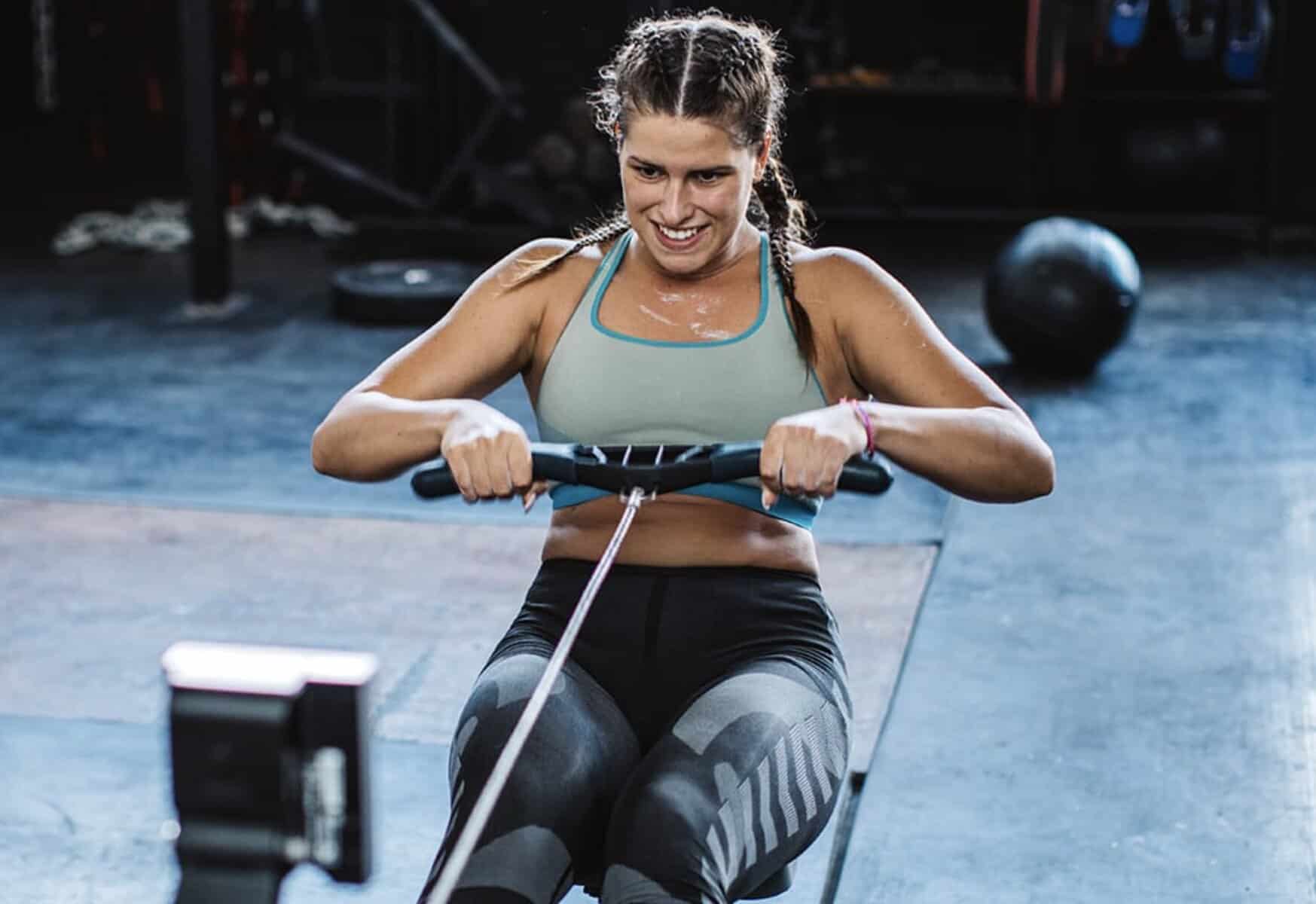
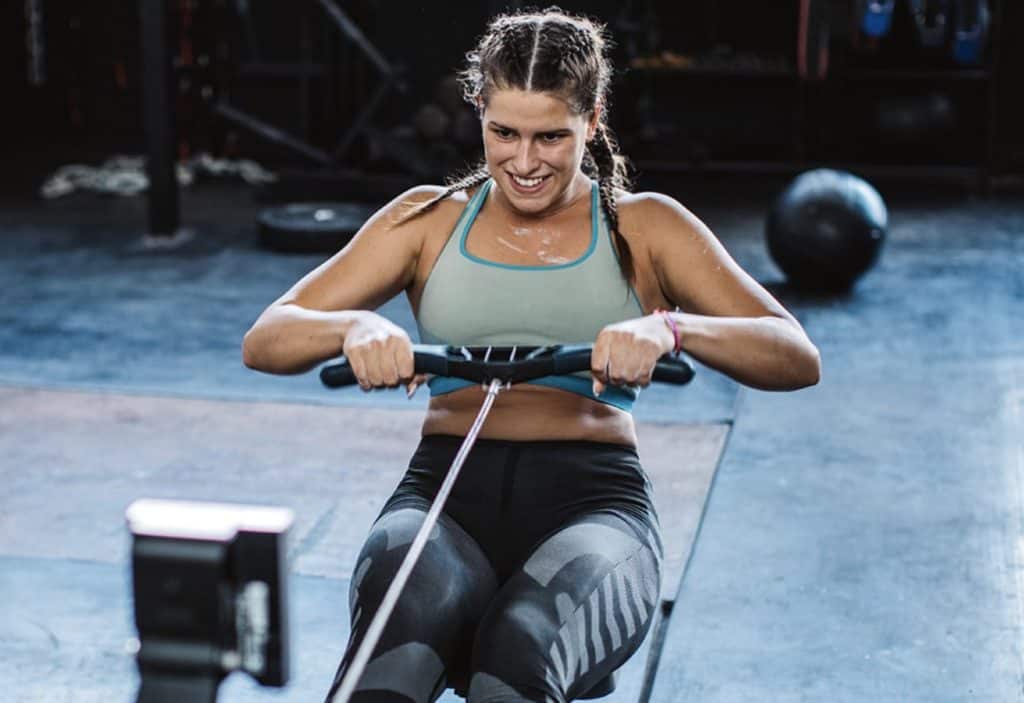
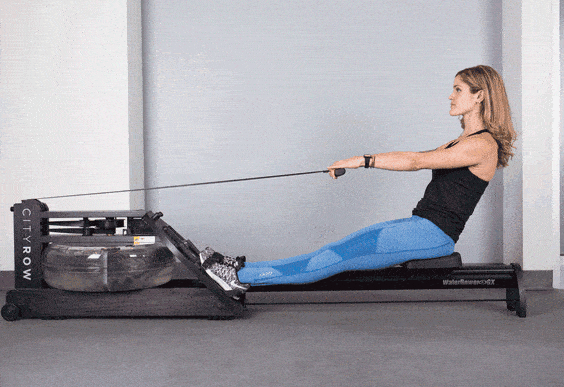
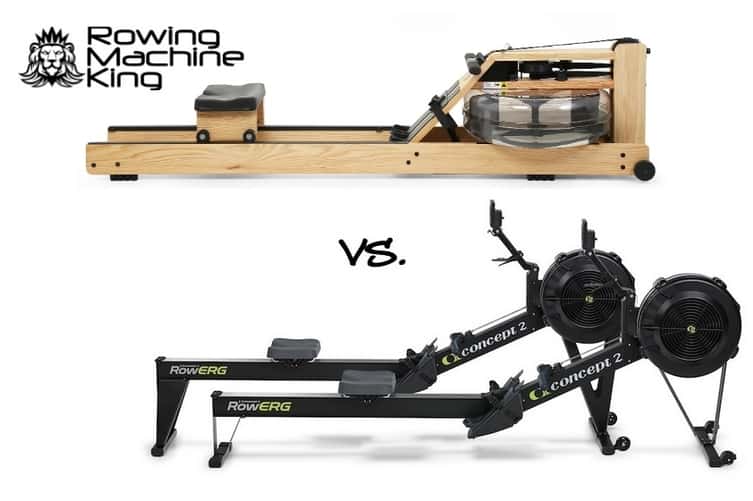
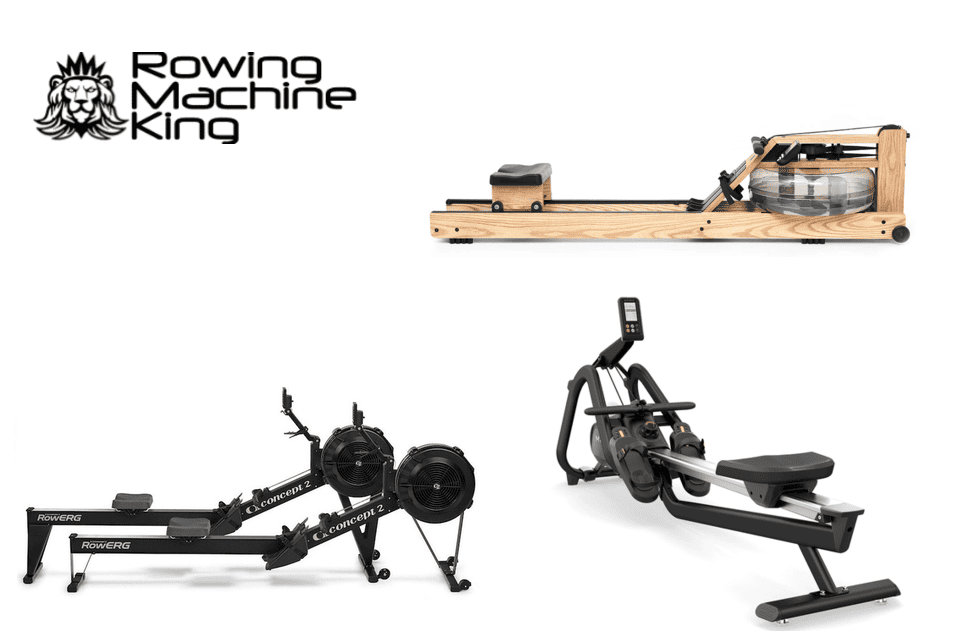
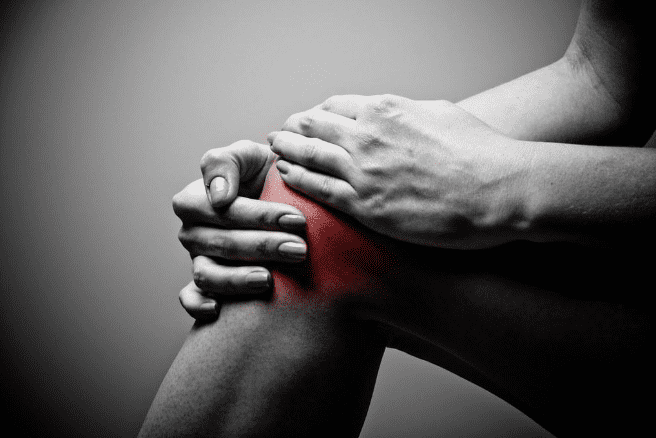
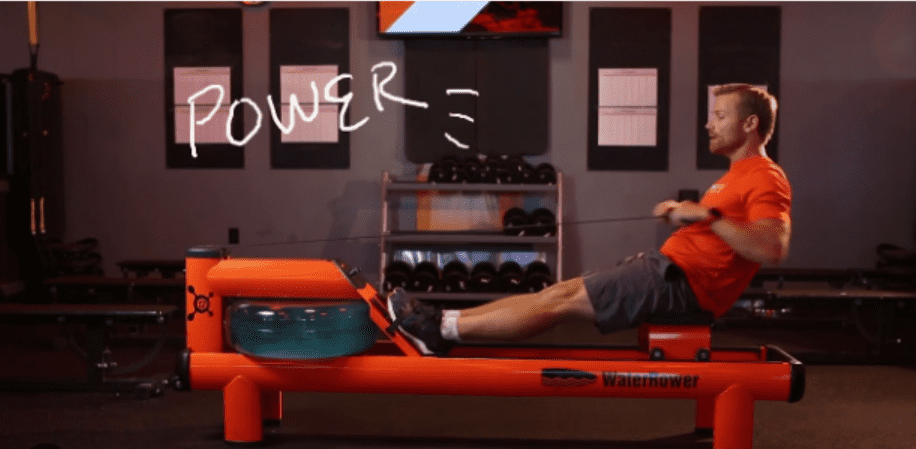
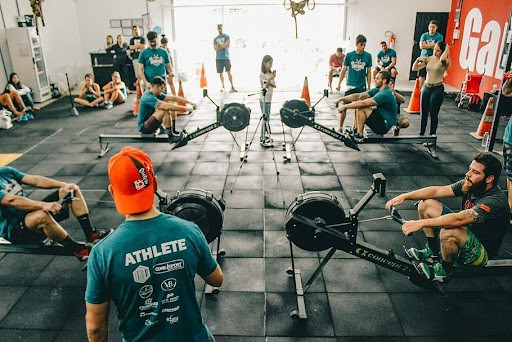
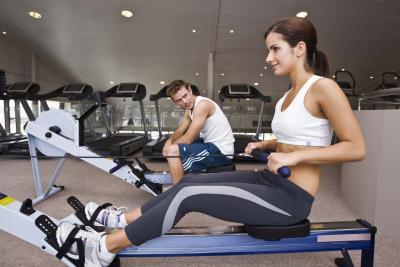
I have been using water rower at cardiac rehab and had to keep RPM between 20-40. And wArm up resistance at 4 and training at 8. I recently purchased an air rower would I keep same numbers
Hi Mary – both resistance types are ‘variable’ resistance so they should be similar. I would try to keep the same numbers and adjust if you feel the resistance is ‘heavier’ or ‘lighter’.
Recently purchased Concept 2. I would like to row bare foot. Is that a problem?
No, not at all! A lot of people row barefoot